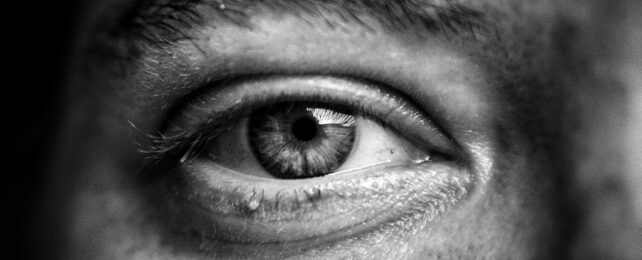The way that some people naturally 'listen' with their eyes could reveal early signs of hearing loss, according to new research.
Usually, when a health practitioner is testing a patient for hearing issues, they test their ears. The volume at which patients first perceive a pure tone is called their hearing threshold, and if this cut-off is too high, it could indicate a need for hearing aids.
The problem with this test, however, is that it only catches a person's hearing loss about a decade or two after the first signs emerge.
Researchers at the University of Toronto and the Rotman Research Institute in Canada have potentially found a better way.
By carefully watching the eyes of participants as they listen to speech, psychologist Eric Cui and cognitive neuroscientist Björn Herrmann have identified a tell-tale sign of hearing difficulty.
The more that a person struggles to hear, the more fixed their gaze.
Previous studies have shown that eyes don't move as much when people are thinking hard. For instance, when someone is testing their memory, their eye movements tend to decrease, almost as if they are staring at a spot in space.
Cui and Herrmann have now shown this also applies to the eyes of listeners who are putting in extra effort to hear.
The study involved three experiments, wherein young adults, who thought of their hearing as healthy, listened to sounds at comfortable volumes while their chins rested on a ledge in front of a computer screen.
Their pupils and eye movements were recorded during the trials.
The first experiment played sounds of speech to 26 participants interspersed with meaningless babble.
After each round of speech, participants were given a quick listening comprehension test.
During the recording of human speech, the screen in front of participants was either blank or showed a fixed square.
The researchers noticed eye movements decreased under the most difficult listening conditions, and a reduction in eye movements was associated with better speech comprehension.
In the second experiment, 22 participants listened to recorded lists of short sentences while they watched a dot move randomly around the screen in front of them.
A listening comprehension test was again administered. The results once again show that eye movements decrease when speech is harder to hear and listening effort is greater.
The final experiment was conducted among 23 participants, who each listened to two 10-11 minute stories from the podcast The Moth.
One of the stories was scrambled so its scenes were told out of order. The other was told in order but was masked by the interrupting sound of human babble. This interrupting sound varied in volume to make listening to the story easier or harder.
The screen in front of the participants showed sixteen dots that moved about at random during the stories. A comprehension test then followed.
During the scrambled story, the eyes of listeners moved about more than they did when listening to the intact story. This is consistent with the hypothesis that individuals do not invest cognitively while listening to an incomprehensible story.
But because the intact story was masked by human speech – kind of like trying to hear a conversation in a busy restaurant – participants had to put in extra effort to hear what was being said.
In the easier scenario, where the background noise was quieter, the eyes of participants moved about more. But when the task got harder, they remained fixed.
In all three experiments, the dilation or contraction of a participant's pupils said little about their listening comprehension. What's more, what was shown on the screen in front of participants had little impact on how much their eyes moved.
The findings suggest that eye movements may hold clues as to how hard a person is trying to listen.
Effortful listening is not always due to hearing loss, of course, but it could be one of the first signs that a person is struggling.
"From a clinical perspective, the next steps are certainly to investigate whether eye movements also indicate listening effort in older adults, because this is the population for which our new approach may be most useful," Herrmann told Ingrid Fadelli at Medical Xpress.
"Moreover, we plan to investigate whether eye movements indicate reduced listening effort when individuals are treated with hearing aids; as this could help to assess how much a person benefits from their hearing-aid prescription."
The study was published in the Journal of Neuroscience.
